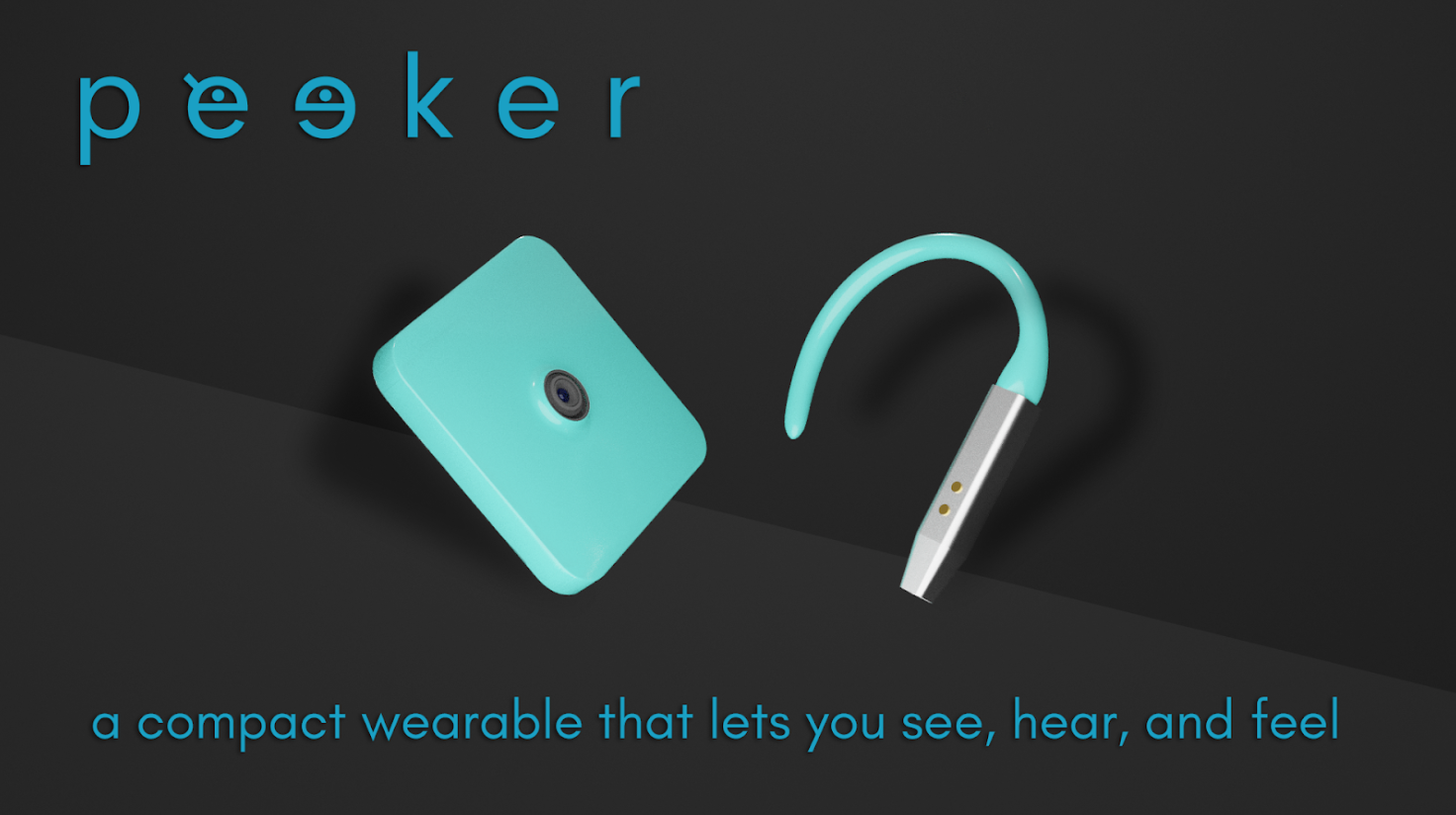Project Peeker
Published:
The problem our project solves:
My grandfather is visually impaired and depends on others to do everyday tasks. Given that he is reliant on touch, we are worried that he will be susceptible to COVID-19. This has led him to struggle with self-isolation because of having no companionship, also making him more prone to emotional distress during this period of self-isolation. This is the reality of 200 million people who are visually impaired around 188 countries. And research shows that the number is expected to triple within the next 4 decades. As social and emotional well-being is of the utmost importance for these marginalized people, the Peeker aims to provide life-long companionship and alleviate emotional distress.

The solution we bring to the table:
The Peeker is a personalized, interactive voice-assistive device with a bone-conducting earpiece. To use the Peeker, the user does not require any technical knowledge and can interact freely and independently. The user interface is designed in such a way to imitate the human interaction of able-bodied people. The bone-conducting earpiece does not block their natural senses and the rotating clip allows for convenient placement of the device There are two main features of the Peeker 1) Inbuilt thermal imaging sensors which alerts the visual impaired of other people with high body temperatures around them 2) Text and Object detection through which the Peeker will alleviate loneliness and allow the experience of live companionship during this period of self-quarantine.
What we have done during the Hackathon:
We have developed a working prototype of the Peeker with standard features such as object and text detection within the course of the hackathon. The working prototype also receives speech input from the user and responds using voice output, making it a complete interactive device. In addition, we have developed the 3D design of our proposed final product, keeping minimalistic design, user experience, and fashion in mind. To ensure that our features meet the needs of the visually impaired, we met some visually impaired workers in the front-line such as those working at restaurants, convenience stores, and NGOs to test our prototype and discuss which features would be most useful to them even after the COVID-19 pandemic. We have also conducted thorough market research to analyze our competitors and have realized that there is no product like the Peeker especially with its adaptable and customized features. According to research, there are many other devices within the assistive device market, however, 39.9% of differently-abled people do not like to wear such devices as it usually is very bulky and medical equipment like or is blocking some of their senses. Hence, our device offers quality services without blocking any of their natural senses.
The solution’s impact on the crisis:
Our solution is simple. The Peeker protects the visually impaired from people with high body temperatures who might be susceptible to COVID-19. This is to encourage social distancing and reduce the chances of getting COVID-19. Furthermore, the Peeker’s objective is to reduce reliance on touch so that the visually impaired are not in contact with the surfaces unnecessarily through its features. Finally, the interactive component of the device engaged the visually impaired to alleviate emotional distress by offering companionship and living independently. For instance, the Peeker allows the visually impaired to conduct activities such as reading a book, distinguishing between different objects, reading road signs, etc. which they otherwise could not do without a helping hand.
The necessities to continue the project:
Currently, our prototype is deployed on the Raspberry Pi. Going forward, we would like to design the integrated circuit of the final product ourselves, so the device is more compact and durable. In addition, our product will also have a silicone cover which is easily identified by the visually impaired. Our current solution is trained on the COCO-object detection dataset, restricting the number of total objects detected to 80. Going forward, we want to train the model with our dataset focusing on the common items that the visually-impaired person uses on a daily basis. Subsequently, we will partner up with manufacturing companies to mass-produce the Peeker. We are also looking to collaborate with NGOs, Governmental Organisations, Optometrists, and Eye Hospitals to develop more user-friendly features so that every Peeker is customized to the needs of the individual.
The value of our solution after the crisis:
The Peeker allows independence with ease to the visually impaired through Peeker. For example, they would be able to go grocery shopping with the help of text detection. They would be able to navigate where things are with the help of object detection. Other added features within the premium package such as different languages, haptic feedback accessories, heart rate, and blood pressure monitor, face recognition, and color detection ensures that the Peeker is a life-long companion that accommodates the visually impaired no matter which demographic they are from.
